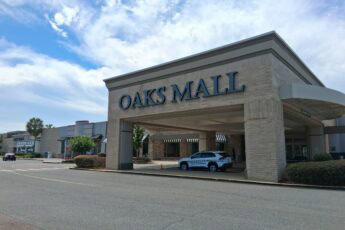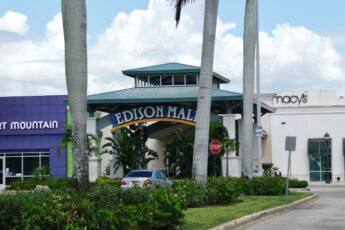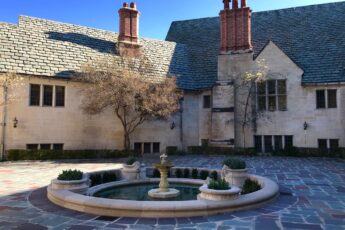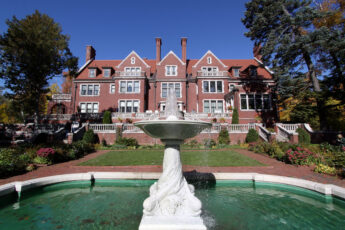Early Beginnings
In 1895, Chicago lawyer Hugh Taylor Birch bought land in Fort Lauderdale, Florida. This purchase marked the start of what would become the Bonnet House estate. Birch's acquisition was part of a broader trend of land sales and real estate development in the area during the late 19th century.
In 1919, Birch gave the property to his daughter, Helen, and her husband, Frederic Clay Bartlett, as a wedding gift. Frederic, an artist and self-taught architect, started designing and building the Bonnet House that same year.
The construction reflected the plantation-style architecture influenced by the Caribbean, setting the estate apart from other properties in Fort Lauderdale.
The Bartletts used Bonnet House as a winter retreat. They enjoyed the mild climate and natural beauty of the estate. This period saw a rise in the popularity of Florida as a winter destination for the wealthy, with many similar estates being developed.
With its unique architecture and personal significance, Bonnet House became a cherished part of the Bartlett family's life. This early development laid the foundation for what would become one of the key things to do in Fort Lauderdale, FL.
Bonnet House: Architectural Design
Frederic Clay Bartlett's design for Bonnet House stands out. He drew inspiration from Caribbean plantation-style architecture. Bartlett built the property's main house, art studio, music studio, and guest house.
Each building reflected his unique vision and creativity. Although a self-taught architect, Bartlett created a grand and personal space.
One of the main house's most striking features is the drawing room ceiling, which Bartlett topped with mahogany from a large log that had washed ashore during a storm.
This detail showcases his resourcefulness and eye for beauty. The use of natural materials gives the house a warm, inviting feel.
The estate covers 35.4 acres, including 100 feet of beach. This expanse allows for various activities and exploration.
The property's layout, with its different buildings and the surrounding landscape, makes it a true retreat. The design choices and the extensive grounds contribute to the estate's charm and appeal.
The Bartlett Era
Frederic and Helen Bartlett enjoyed many winters at Bonnet House, appreciating the mild climate and serene environment. Helen's untimely death in 1925 was tragic. In memory of Helen, Frederic donated their extensive art collection to the Art Institute of Chicago.
After Helen's passing, Frederic married Evelyn Fortune Lilly. Together, they continued to use Bonnet House as their winter residence.
The couple lived there until Frederic died in 1953. Evelyn continued to visit the estate until she died in 1997. Evelyn's dedication to the property showed how she maintained and preserved the house and gardens.
In 1983, Evelyn deeded the property to the Florida Trust for Historic Preservation, ensuring that the estate would be preserved and maintained for future generations.
The donation, valued at $35 million, is the largest private donation in Florida's history. This generosity allowed the Bonnet House to become a public museum, sharing its beauty and history with all visitors.

Preservation and Public Access
In 1984, Bonnet House was listed on the U.S. National Register of Historic Places, highlighting its architectural and cultural value. The Florida Trust for Historic Preservation took over its maintenance, ensuring the property stayed in good condition.
Bonnet House operates as a museum today, offering guided tours to the public. These tours provide a glimpse into the estate's history and architecture.
The museum showcases Frederic Bartlett's art, giving visitors a deeper appreciation of his work and vision.
The estate spans 35.4 acres and features diverse ecosystems, such as mangrove wetlands, maritime forests, and beach dunes. These natural areas add to the site's charm and educational value.
The combination of historic buildings and natural landscapes makes Bonnet House a unique destination for learning and exploration.
Cultural and Historical Value
Bonnet House holds a place in the cultural landscape of Fort Lauderdale. Frederic Bartlett's art collection, donated to the Art Institute of Chicago, remains a testament to his and Helen's love for art. This donation helped cement the estate's cultural importance.
1988, The New York Times described Bonnet House as a "time capsule" from an earlier era. This description captures the essence of the property, which preserves the lifestyle of early 20th-century elites. The estate offers a rare look into the past, making it a valuable educational resource.
In 2012, Bonnet House joined the Riverwalk Arts and Entertainment District. This partnership expanded its reach and impact, attracting more visitors and cultural events.
The estate continues to serve as a hub for arts and education, enriching the community and preserving its heritage.
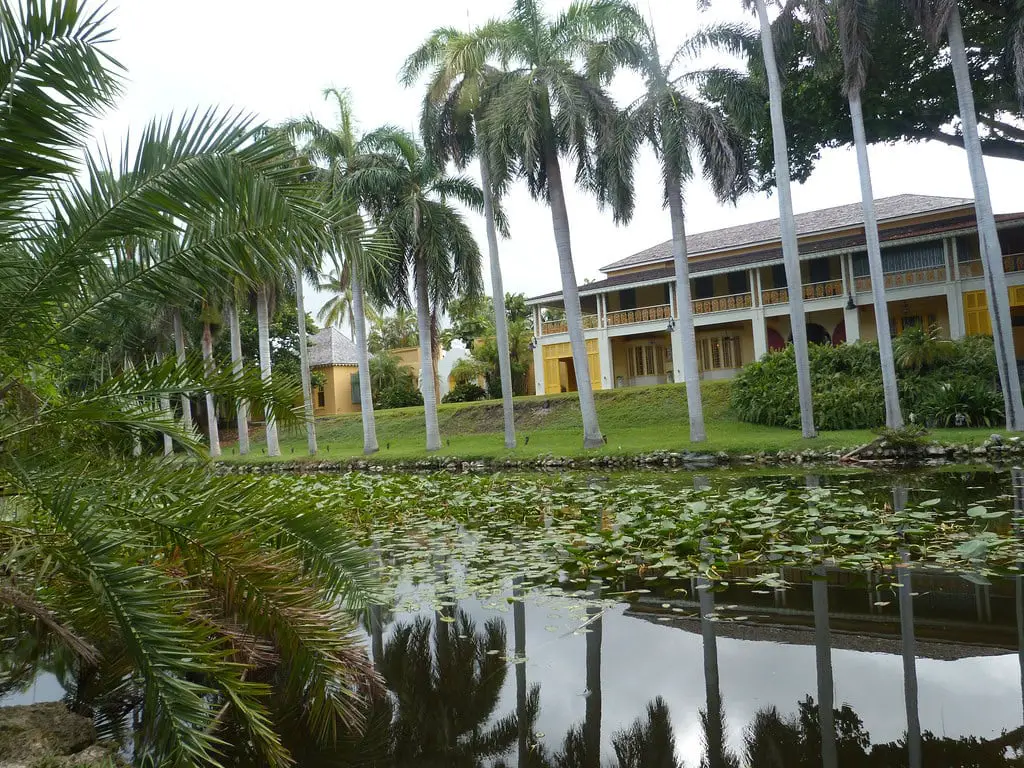
Modern Developments
Bonnet House has seen many changes and developments in recent years. In 2015, after five years of negotiations, Bonnet House officials secured a deal with the city of Fort Lauderdale.
This deal allowed them to designate a private 700-foot beachfront property, making hosting weddings and other events easier without special permits.
In 2008, the National Trust for Historic Preservation listed Bonnet House as one of America's Most Endangered Places. This recognition brought attention to the estate's need for ongoing preservation efforts.
The same year, Bonnet House settled a lawsuit against a developer planning an 18-story hotel nearby. The settlement included nearly half a million dollars for landscaping to block the view of the new building.
Bonnet House has also become a popular filming location. In 2005, it was the finish line for the seventh season of CBS's reality show "The Amazing Race." The estate was also featured in "Hoot," adding to its modern-day relevance and appeal.
Community Engagement and Events
Bonnet House actively engages with the community through various events and programs. The estate hosts public events like Family Fun Day, which draws locals and tourists alike. These events offer a chance to explore the house and gardens while enjoying activities for all ages.
The estate also serves as a venue for weddings and private events. This use provides a steady stream of revenue, helping to fund ongoing preservation efforts. The picturesque setting makes it a sought-after location for special occasions.
Education plays a key role at Bonnet House. The museum offers tours that delve into the estate's history, architecture, and natural surroundings.
These tours are an excellent way for visitors to learn about the unique blend of art, history, and nature found at Bonnet House.
Through these educational programs, the estate continues to enrich the community and preserve its cultural heritage.

